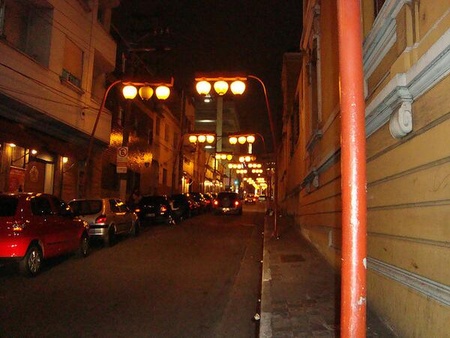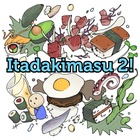[The city of São Paulo’s] Rua Américo de Campos is a short and narrow roadway that begins at Largo da Pólvora, crosses Rua Galvão Bueno, and, at the corner of Rua da Glória, comes to an end at Praça Almeida Júnior. I was able to follow its trajectory with my eyes closed. Well, at least back then I was. At number ... 1154? That’s where you could find Misuzu, a sui generis Japanese restaurant.
This restaurant differed from other restaurants in the Asian neighborhood [of Bairro da Liberdade] by the fact that it opened its unique, small, and narrow door with blue curtains decorated with white ideograms – from where hung a dusty, typically Japanese lantern – only after 10 p.m. Why so late? Well, because its clientele consisted of nocturnal animals that never left their burrows before that hour. It was there that the cream of bohemian life got together back in those days, the ‘80s and ‘90s: students, street types, sex escorts…
Kembo-san, the owner, was a friendly chap, while the house dishes, especially the seafood yakimeshi (fried rice), were simply masterful. The steaming soybean (miso) soup tureens with floating tofu cubes were a holy medicine for lingering hangovers.
I am thus taking the time to relate an unusual occurrence, among the many that took place at that sorely missed meeting spot for nighthawks. This is a story, I assure you, that I did not hear from third parties, since it features as its protagonist the chronicler currently in the throes of writing this essay.
Just like every Japanese restaurant worth its salt, Misuzu demanded that, when walking in to take their place on the tatami, customers had to take off their shoes. Some felt embarrassed because of potentially unpleasant odors; others felt they might embarrass themselves due to potential holes in their socks.
As it happened, at the end of a night out with some friends, with everybody, as usual, feeling quite cheerful under the effect of countless beers, we headed to Misuzu – the requisite pit stop for recharging low batteries.
After savoring a delicious grilled fish (yakizakana) and gulping down another round of biiru (beer), we asked for the check, paid the bill, and went each to our respective homes.
Walking down Galvão Bueno, I found it strange that my shoes felt much too loose.
“Either my feet have shrunk, or these shoes have grown larger,” I remarked.
The teasing from those who were coming my way was relentless. I was wearing the shoes of another customer who could well be in a tight spot at that very moment. I returned to Misuzu, and luckily my shoes were still there, on the shelf by the front door. I discreetly corrected the situation, but I was unable to prevent the story from rapidly spreading all over that Asian neighborhood.
Misuzu no longer exists. Its legacy, however, has been recorded in this chronicle about the beloved Bairro da Liberdade.
Note:
* Honto Ni (in Japanese: “it’s true”)
© 2017 Chico Pascoal




